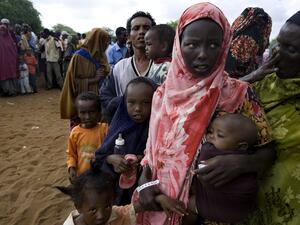Congo: mission to assess impact of fresh DRC influx
Congo: mission to assess impact of fresh DRC influx
UNHCR is sending a mission to the Congos and the Central African Republic to assess the impact of a fresh influx of refugees from the Democratic Republic of Congo who settled along the Congo and Ubangui rivers in the north of the neighbouring Congo Republic. The mission will visit several areas affected by the influx and look at ways of aiding those who are situated along unreachable parts of the river. It will also consider cross border aid deliveries from the Central African Republic. UNHCR puts the total number of refugees there at about 98,000. They were driven out by recent fighting in the Equateur province between DRC's Congolese Armed Forces (FAC) anti-government rebels. Most of these refugees are presently unreachable because of the tension along the river.
A separate mission by road from Bangui to the Betou Prefecture 200 km away in the Northern part of the Republic of Congo confirmed the presence of an estimated 20,000 refugees in and around Betou. Thousands more are believed to be scattered in the forest and along the shore further south. Most of the refugees arrived in July. They are putting a tremendous strain on the local population, which stood at 7,000 before their arrival. Although many of them have been accommodated with local families, they sleep in the open and lack basic necessities. Fish and manioc have become very scarce, and the price of manioc has doubled since the refugees arrived.
UNHCR is planning to open a field office in Betou to provide material and medical aid as well as educational materials to the refugees. Food and agricultural tools as well as seeds will be distributed. UNHCR is negotiating with the authorities to grant plots of arable land to refugees. Other material assistance, including plastic sheeting, wooden rafters, kitchen sets and blankets is being planned. Vaccination against measles has already been administered to some 4,000 persons, including both refugees and the local population.




